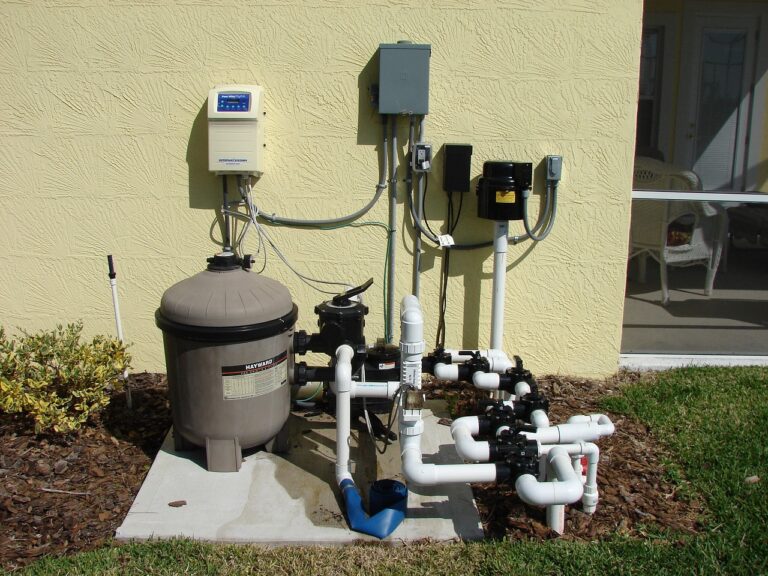Hydraulic systems serve as the backbone of numerous industries, powering heavy machinery, construction equipment, and various industrial applications. At the core of these systems lies the hydraulic pump, responsible for converting mechanical power into hydraulic energy.
However, optimizing the functionality and efficiency of a hydraulic pump often requires more than just the pump itself. Several accessories play a pivotal role in enhancing pump operation to ensure peak performance.
In this article, we explore five essential accessories that can significantly optimize hydraulic pump performance, including some unique considerations for each.
Table of Contents
Pressure Control Valves
Pressure control in hydraulic systems involves managing fluid flow into or out of a restricted volume to achieve specific pressure levels. While relief valves and pressure-reducing valves are crucial components, it’s essential to note that they don’t actively control pressure to reach a desired setpoint.
Relief valves and pressure-reducing valves play critical roles in hydraulic systems by limiting or reducing pressure within specific constraints. Pressure-reducing valves lower pressure based on a fixed ratio relative to the input, while relief valves cap pressure at a predetermined value.
However, they lack the ability to actively adjust to pressure or accommodate diverse pressure needs in real time. They function solely as proportional-control devices with no rate-control capability.
Contrarily, P-Q (pressure and flow control) valves offer the flexibility to regulate either pressure or flow, sometimes in tandem with a pressure limit. Equipped with microprocessors or digital signal processors housing comprehensive PID controllers, P-Q valves present advanced capabilities for various pressure-control applications.
They are suitable for scenarios where rapid pressure changes aren’t required or in systems with stable pressure demands. However, deploying P-Q valves encounters challenges, particularly related to pressure sensing in high-flow and turbulent conditions.
These valves facilitate precise management of pressure levels, ensuring the system operates within safe and efficient parameters. Unlike relief and pressure-reducing valves, pressure control valves with advanced controllers offer greater versatility and accuracy in maintaining desired pressure or flow levels.
They contribute significantly to system stability, reliability, and performance, allowing for tailored pressure regulation in various industrial applications without compromising safety or efficiency.
High-Efficiency Filtration Systems
Maintaining hydraulic pumps relies significantly on clean hydraulic fluid, which is pivotal for their efficiency and durability. The performance and longevity of a hydraulic system hinge on factors like fluid quality, temperature, and cleanliness.
According to a report by MDPI, over 70% of failures stem from contaminants within the hydraulic fluid, with solid particles causing 60–70% of these issues.
Therefore, investing in high-quality filtration systems isn’t just about basic filtration; it requires advanced technology capable of capturing even the tiniest impurities. Incorporating bypass filtration systems further enhances fluid cleanliness during system operation, preventing particle-induced wear and ensuring prolonged cleanliness.
Magnetic filtration is an innovative feature that attracts ferrous particles from the fluid, providing an additional layer of purification. This process extends the lifespan of pumps and other system components.
Variable Speed Drives for Adaptive Control
Variable speed drives offer the ability to adjust pump speed according to operational requirements, significantly impacting energy efficiency and system performance. Utilizing advanced variable speed drives with adaptive control algorithms can dynamically adjust pump speeds based on real-time demand.
Moreover, integrating intelligent control systems that learn and adapt to varying load conditions can optimize energy consumption further. The unique consideration lies in the integration of predictive analytics within these pump drives. These analytics anticipate load changes, allowing proactive speed adjustments to enhance efficiency and decrease energy consumption.
Heat Exchangers for Temperature Regulation
Managing operating temperatures is critical in hydraulic systems to prevent fluid degradation and component damage due to overheating. Cotta notes that implementing efficient heat exchangers equipped with innovative cooling technologies helps regulate fluid temperatures within optimal ranges.
Utilizing heat exchangers designed with materials offering superior heat dissipation is an essential consideration. Additionally, incorporating smart cooling systems that adjust cooling intensity based on demand further enhances the efficiency of the setup. These systems prevent overheating, maintain fluid viscosity, and ensure consistent pump performance even under varying temperature conditions.
Smart Sensors and Remote Monitoring Systems
Incorporating smart sensor technology and remote monitoring systems revolutionize pump maintenance by enabling real-time data collection and analysis, offering crucial insights into operational parameters.
By installing sensors that continuously monitor fluid cleanliness, temperature, pressure, and pump performance, proactive maintenance becomes feasible. Integrated with remote monitoring systems, these sensors provide valuable alerts and notifications based on analyzed data. They also enable timely interventions, effectively preventing unexpected downtime.
Additionally, the utilization of IoT-enabled sensors streamlines remote access and offers comprehensive system diagnostics, empowering swift and informed decision-making for optimized pump performance.
The Internet of Things (IoT) serves a crucial role in real-time machine monitoring during operations. It captures data through embedded devices or gateways, facilitating subsequent analysis and maintenance planning.
Employing IoT-enabled condition monitoring through sensors proactively identifies potential issues, allowing for preventive measures before problems escalate. Sensors adeptly monitor shifts in vibration and temperature, identifying irregularities such as misalignment or imbalance. They then automate scheduled service maintenance to proactively prevent failures, resulting in reduced unplanned downtime and lowered maintenance expenses.
In conclusion, optimizing hydraulic pump performance involves a holistic approach that extends beyond the pump itself. Incorporating these five essential accessories can significantly enhance efficiency, prolong system lifespan, reduce downtime, and ensure consistent, reliable operation across diverse industrial applications.
By prioritizing these accessories, industries can maximize the potential of their hydraulic systems, enabling them to meet evolving operational demands efficiently.

